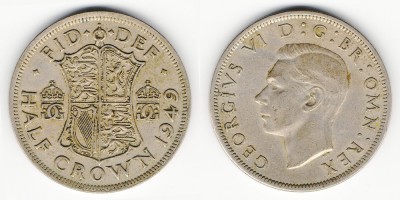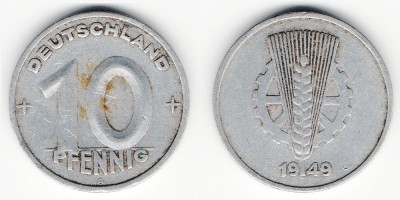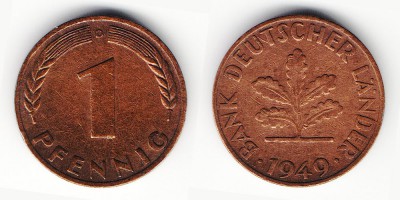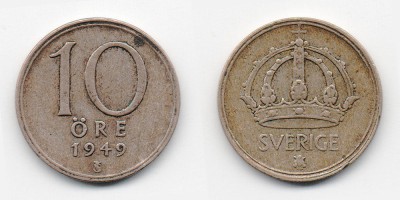Numismatics is an interesting science. Each coin has its own history, its own world. For example, coins of 2 kopeks, issued in the USSR in 1949, have two varieties. And they differ in the variant of stamps (conditionally, pieces A and B) of the reverse.
For the first variant it is characteristic that in figure 4, in the designation of the year of release (1949), the gastus is short, and the stipules look thin and elongated, the knot is shifted to the right.
And for the second option (stamp B), the length of the tape is long, and the stipules are wide and shortened. The coin of this variant is very rare.
On the obverse of the coinage of 1949 - 1, 2, 3, 5, 10, 15 and 20 kopecks in the emblem of the USSR there are 16 ribbons corresponding to 16 republics of the Soviet Union.
Coins with face values from 1 to 10 kopecks were made of aluminum bronze, and denominations of 10, 15 and 20 kopecks were made of copper-nickel alloy.
In Portugal, saw the light of a bronze coin of 20 centavos.
Austria pleased the world with the regular issue of a coin in 10 pennies of 1949.
In Czechoslovakia in the summer of 1948 the chairman of the Communist Party of the country became the president of the state. The outstanding Czech artist O. Shpaniele - the author of a number of world-class coins, in 1949 new world-class masterpieces were created. These were coins of 50 and 100 kroons minted from silver of sample 500. On the obverse of the coins there was an image of Stalin dressed in a marshal's uniform. "Stalin's coins" were issued in millions of copies, each. By the way, the nominal value of 100 crowns belongs to the commemorative coin of Czechoslovakia, dedicated to the anniversary date - the 70th anniversary of the birth of Joseph Stalin.
The scale of Poland’s release in 1949 of a coin worth 20 pennies is striking. They were released more than 133 million copies. An interesting fact is that 1949 is the only year of minting of Polish bronze coins in 5 pennies.
 Russian
Russian English
English Deutsch
Deutsch Spanish
Spanish Português
Português













